Break It Down: Drew Brees' record-setting night
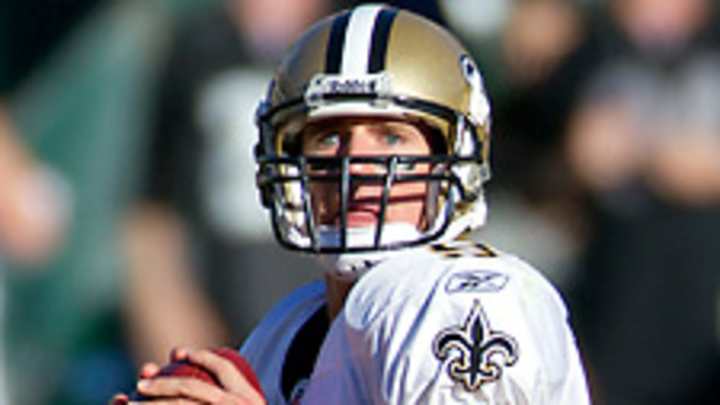
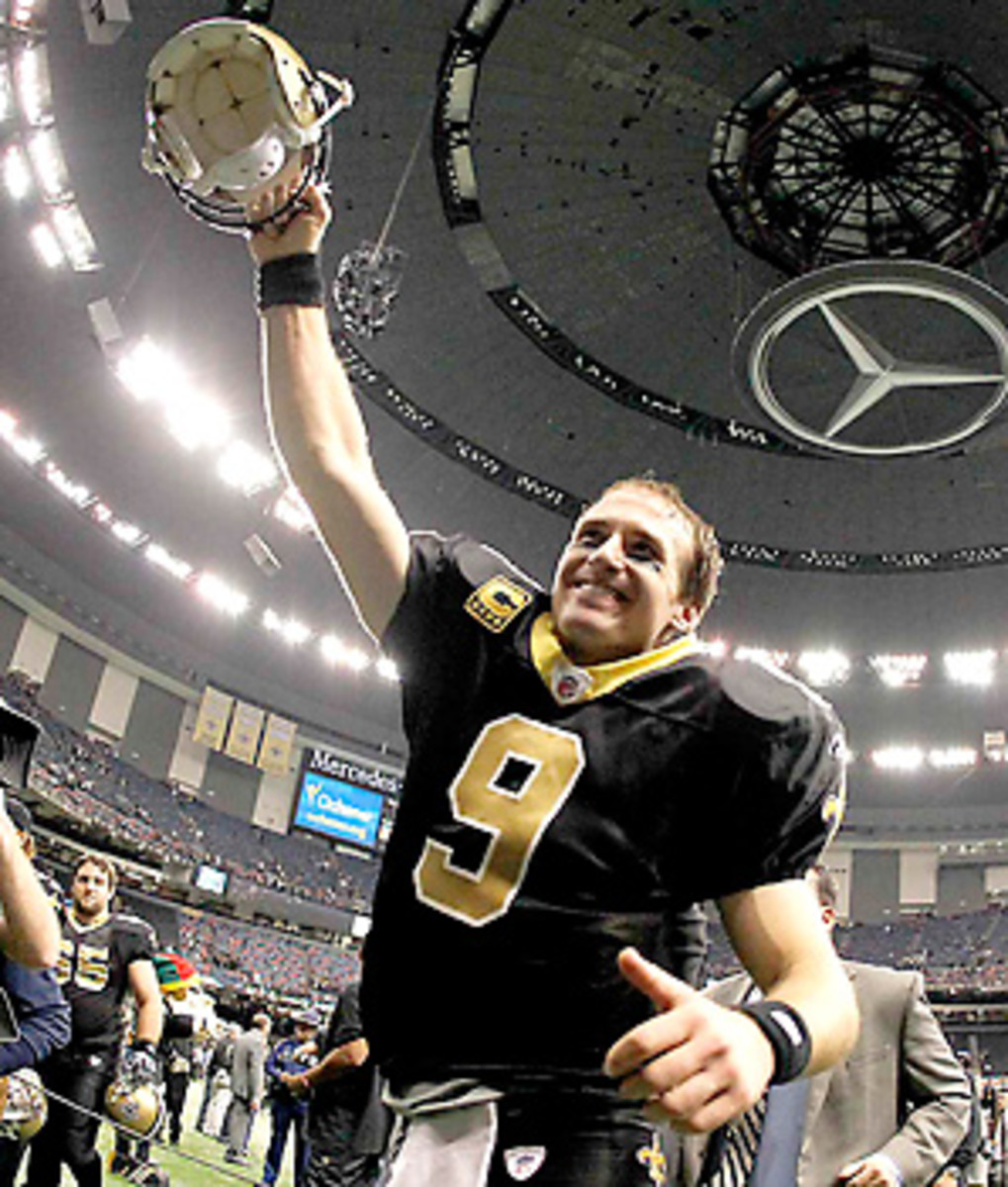
Drew Brees has one more game to add to his now-record 5,087 passing yards. (Sean Gardner/Reuters)
In Break It Down, I will go back and analyze the Xs and Os of a play or performance from the NFL week that stood out above the rest.
It took every single one of Drew Brees' 39 passes Monday night for him to get the yards he needed to surpass Dan Marino as the NFL's single-season passing leader. But Brees finally jumped Marino in the record books with a 9-yard TD pass to Darren Sproles in the closing moments of a 45-16 Saints win over Atlanta.
With one game left in the regular season, Brees now has 5,087 yards passing, three more than Marino put up in 1984.
Brees wasn't flawless Monday -- he threw a pair of interceptions and easily could have had at least one more -- but he did more than enough to bury Atlanta.
Let's take a look back at his historic evening, starting with the play that gave him the single-season passing mark.
The Saints roll out a bevy of different shotgun looks, but this is one that they used multiple times Saturday -- split backs next to Brees with two receivers to one side and tight end Jimmy Graham alone on the other. Running back Darren Sproles, who wound up on the receiving end of the TD pass here, is boxed.
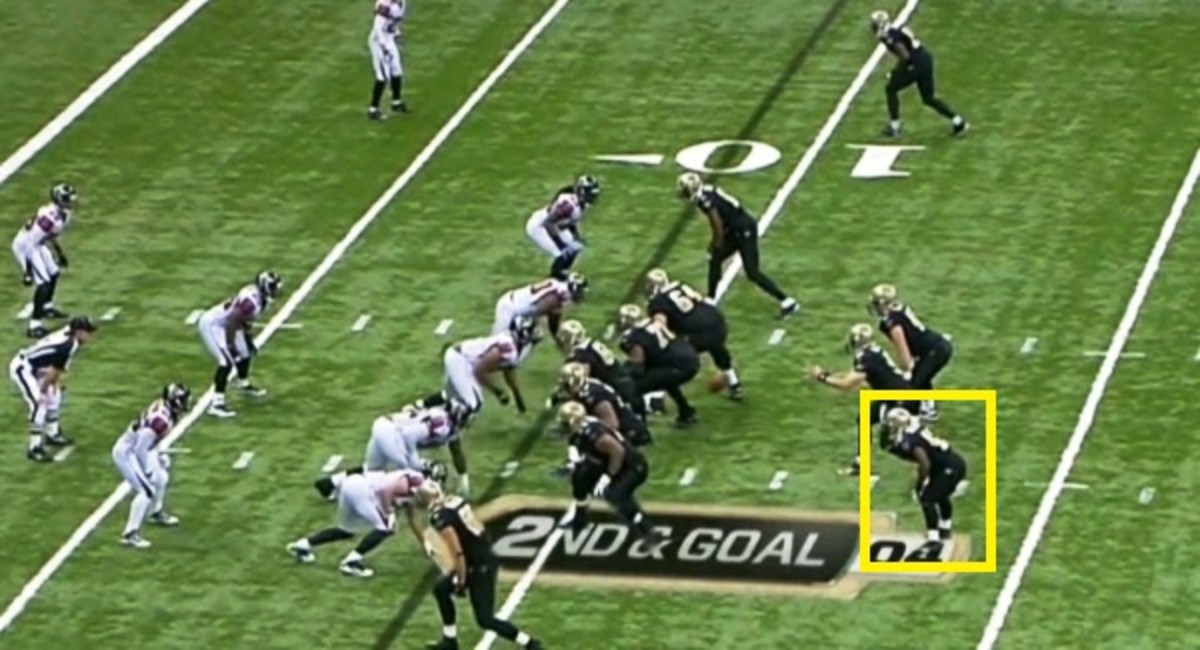
The Falcons rushed four on this play, leaving seven defenders to cover Brees' five receivers -- Graham, Sproles, Marques Colston, Robert Meachem and fullback Jed Collins.
Brees took the snap and immediately looked left, where he had two options: Graham and Sproles. Graham, a favorite red-zone target of Brees (and a recipient of an early touchdown pass) heads to the back corner, clearing out one defender.
That left linebacker Sean Weatherspoon on Sproles, with safety William Moore deep. Those two defenders are boxed below.
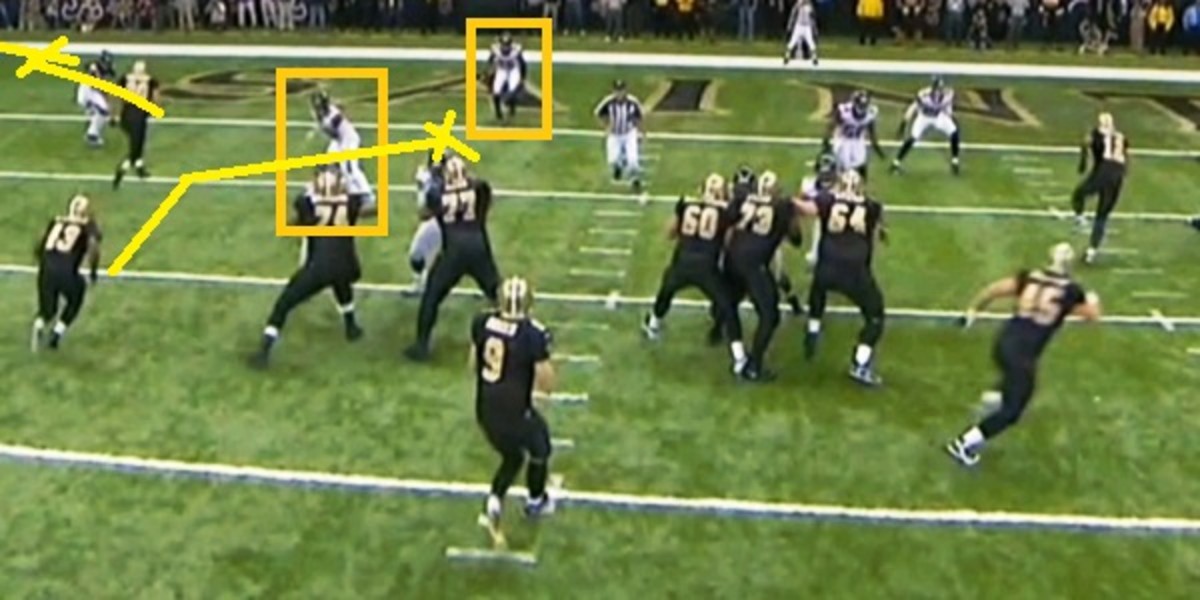
Sproles worked himself open with a terrific stutter-step move on Weatherspoon -- he faked outside, ducked back inside and landed in the gap between the Falcons' linebacker and his over-the-top help.
Brees didn't hesitate for a second, delivering a strike to Sproles for the touchdown and the record.
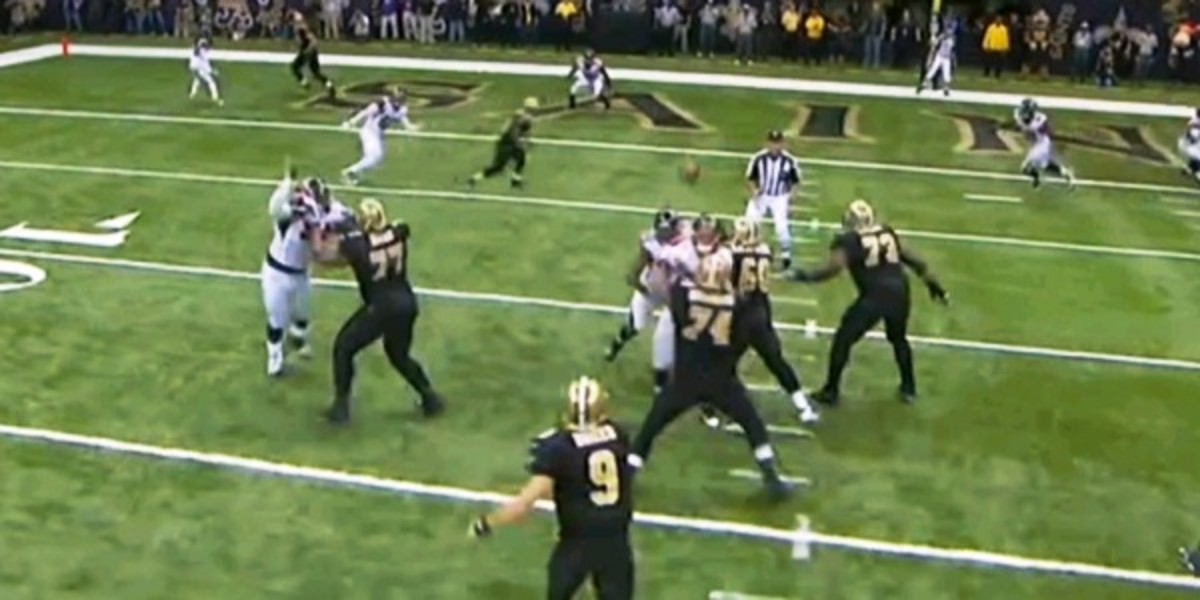
Brees' first touchdown pass of the night, an 8-yarder to Colston, came out of essentially the same formation, just flipped.
Again with split backs, Brees had Graham to his right, with Colston and Meachem to his left.
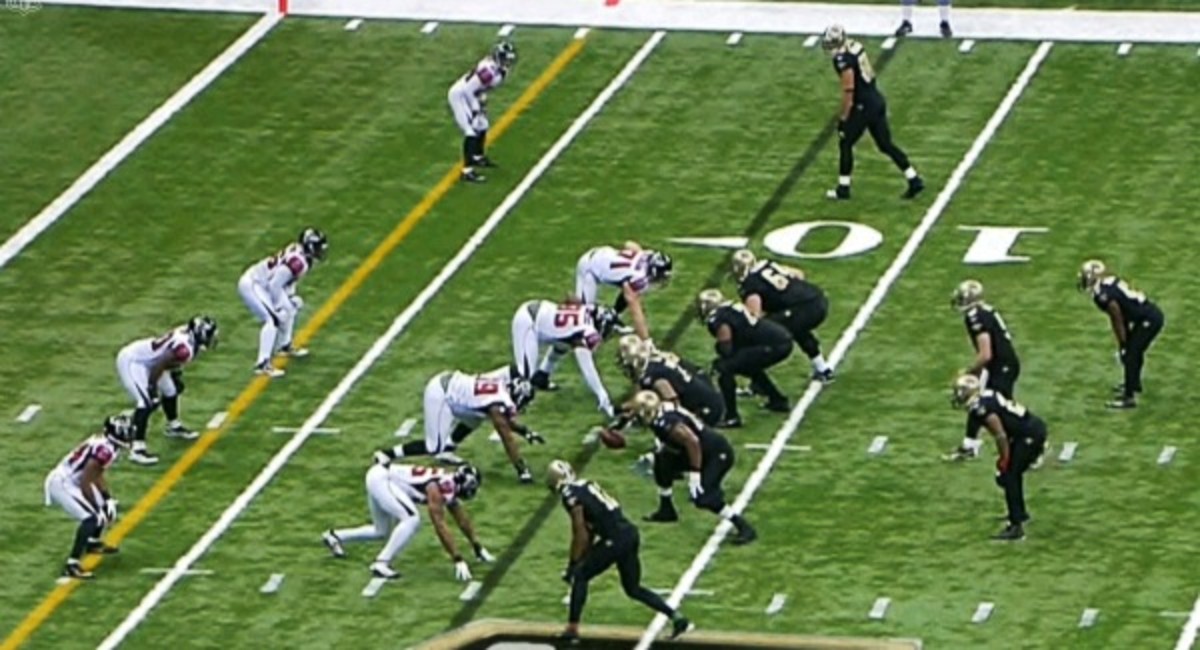
This is a prime example of why the Saints' scheme can be so hard to defend. Here, the Falcons rushed three, sat three linebackers in front of the goal line and dropped five defensive backs into coverage.
Sproles is boxed in the photo below. He again slid to Graham's side of the field, though this time he just dropped into the flat -- as opposed to cutting to the middle, as he did on the fourth Brees TD of the night. Pierre Thomas, lined up as the other back in the backfield, also moved to Brees' right, pulling the defense ever so slightly.
Meanwhile, Colston countered that action by running an out pattern in the opposite direction. What the Saints basically did by playing to the sidelines was eliminate Atlanta's linebackers as viable pass defenders. There were no receivers anywhere near the middle of the field -- meaning the Saints turned a 5-on-8 receiver-to-defender disadvantage into a 5-on-5 situation.
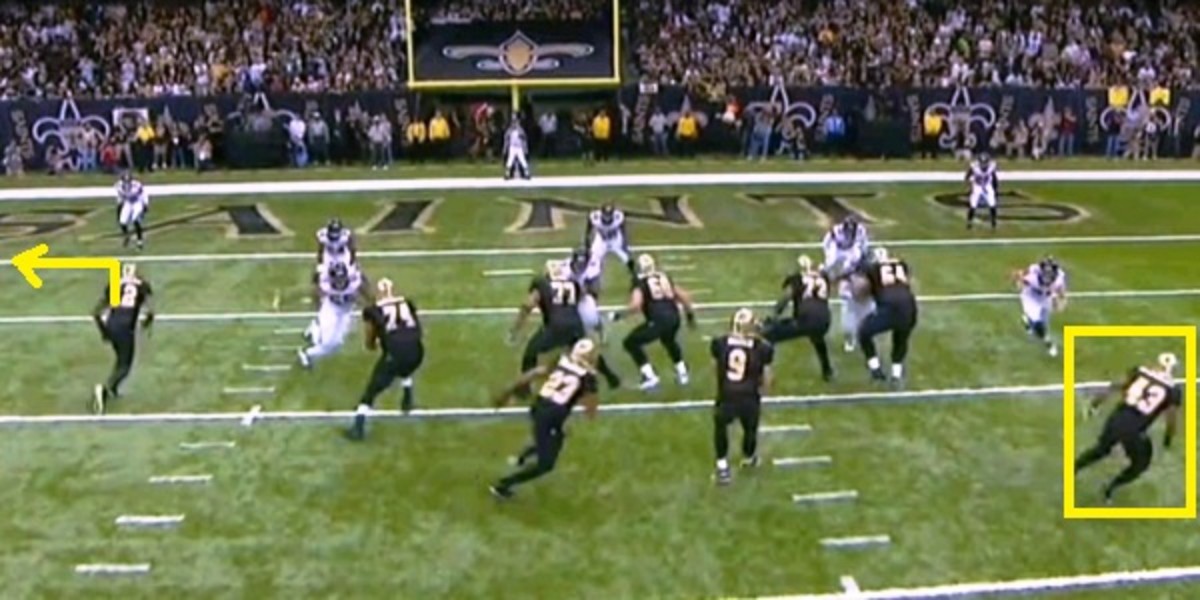
Colston came open near the goal line, Brees delivered a strike and Colston dove in for six.
It wasn't always that easy for Brees on Monday night, though it's almost easier to appreciate the Saints' overall talent level on plays like Brees' 24-yard TD to Meachem in the third quarter.
Instead of sitting back in coverage, the Falcons sold out on a blitz, which wasn't thrown off at all by a play-action fake. Before Brees' receivers were even into their breaks, the New Orleans QB had pressure in his face.
But Atlanta failed to complete the play, letting Brees escape trouble. Despite the rush, Brees managed to keep his eyes downfield -- something you'll see him do time and again -- and gave Meachem a chance to get open.
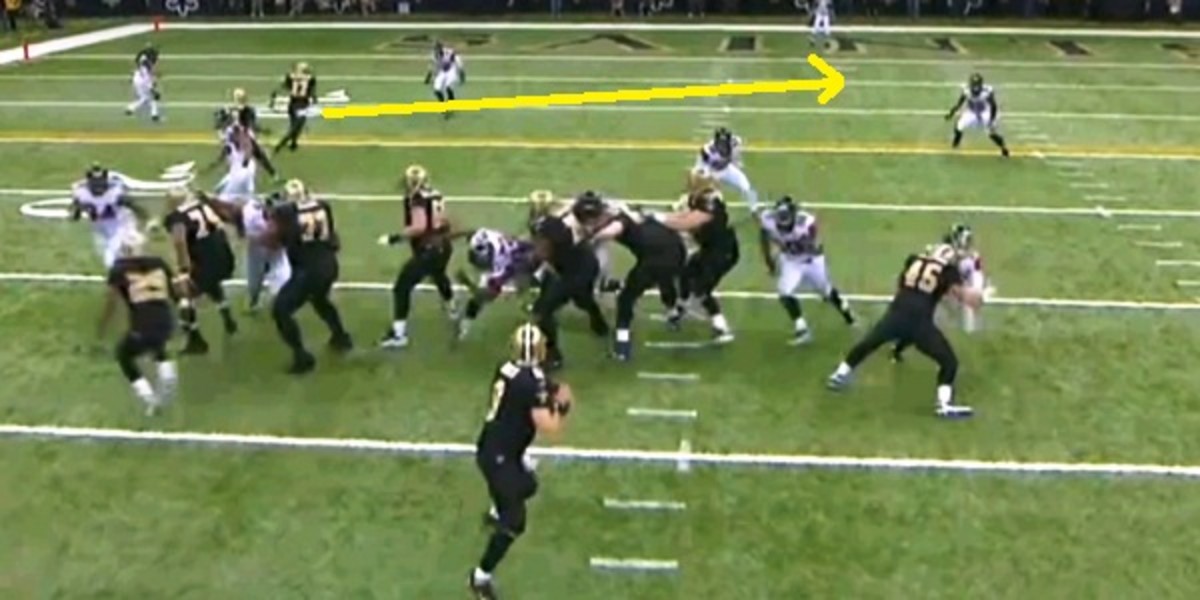
If a defense is going to bring a blitz against an offense like the Saints', that blitz has to result in a sack, scramble or throwaway. Otherwise, the secondary has to try to cover New Orleans' talented receivers for an extra beat or two, which is more than enough time for them to get open.
That was the case on this TD, as Brees eluded the rush and Meachem extended his route across the field. Meachem gained a step or two on the Falcons' deep coverage and Brees hit him in the end zone.
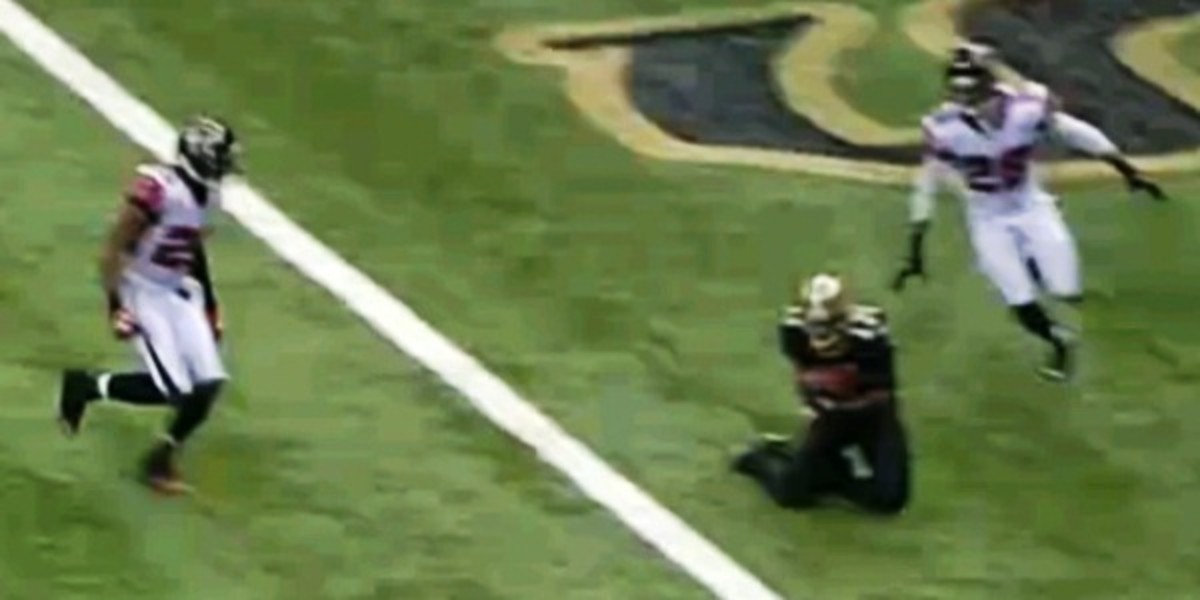
The pass rush let Atlanta down on Brees' second-quarter TD pass to Graham, too.
Once again, the pressure was there.
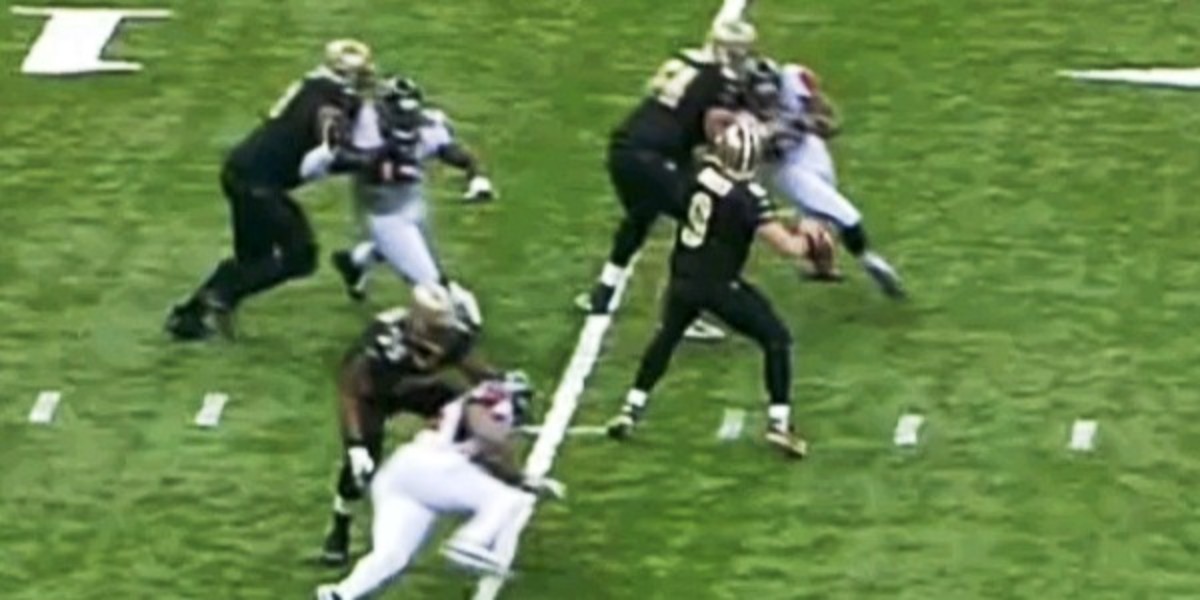
But once again, Brees avoided the sack, as he stepped past the rushing Atlanta defensive line. Plain and simple, Brees is going to find someone to throw to in those situations.
Why? Well, besides seeing the field well, his receivers frequently present him with mismatches to exploit. Case in point: 6-foot-6 Jimmy Graham defended in the end zone, one-on-one, by 5-10 Brent Grimes. Brees tossed up a jump ball, and the athletic Graham outleaped Grimes for an easy six.
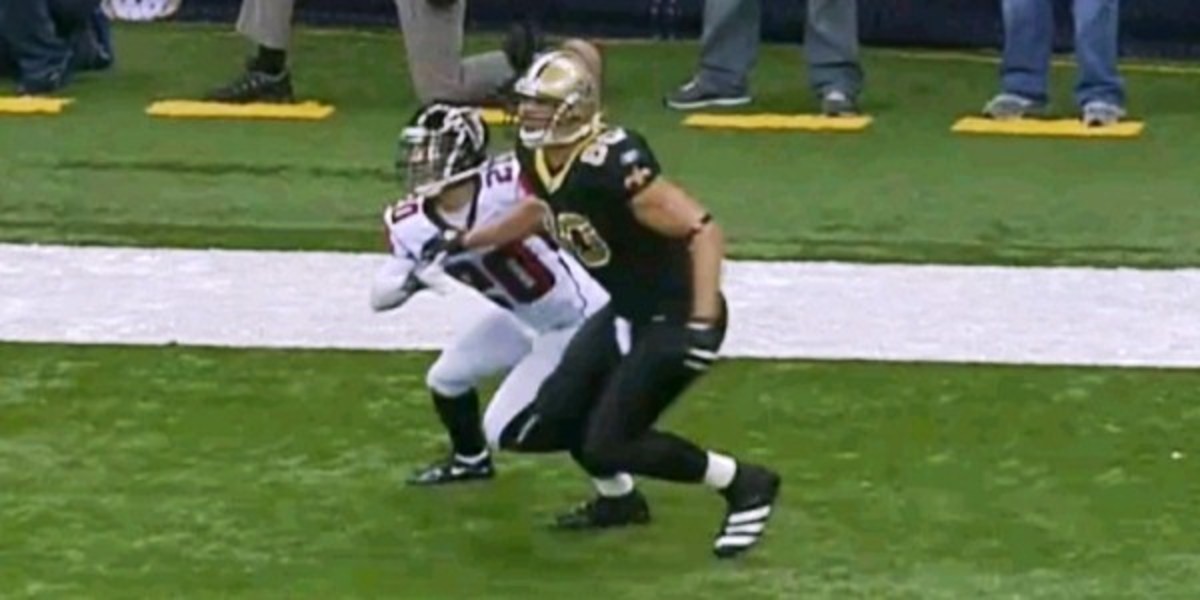
A quick backtrack to Brees, though, and how well -- and how long -- he keeps his eyes downfield before going to Plan B. On the Graham touchdown, Brees stepped up and had an opportunity to run for a few yards. Instead, he ducked away from the rush, bought just a tiny bit more time and reloaded to find Graham.
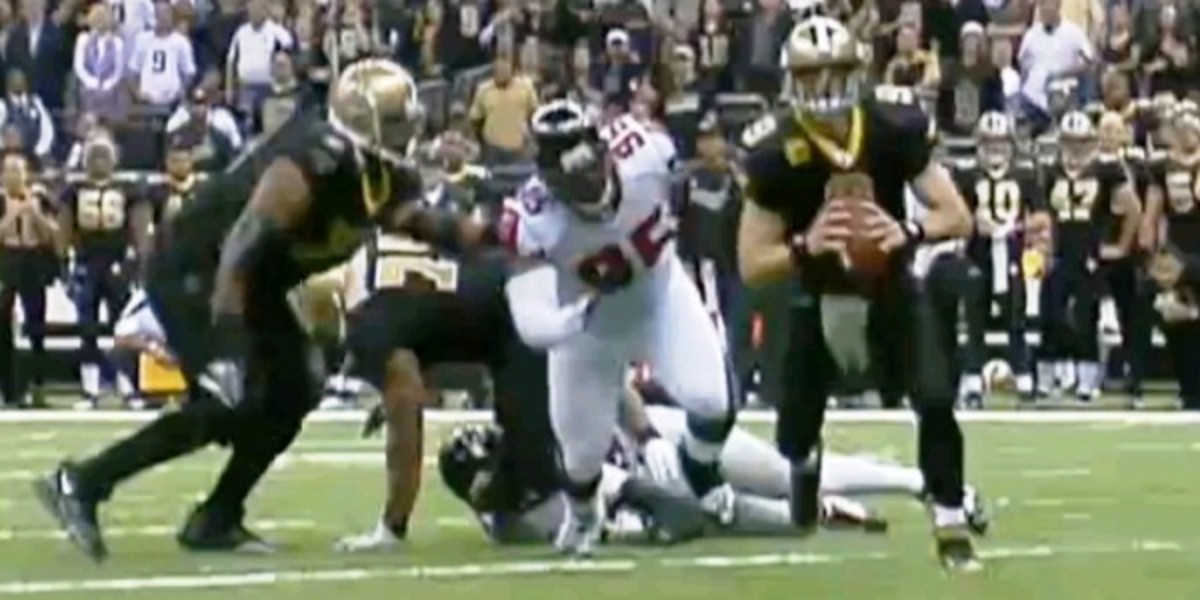
Brees will make some mistakes over the course of a game or season -- he has 13 interceptions this year and threw 22 in 2010. But the reality is that the Saints' offense is a nightmare for opposing defenses.
New Orleans also rushed for 164 yards Monday, further emphasizing how difficult things can get for the other team. Brees has an endless supply of weapons to throw to, players whom he can trust to make plays, even when the defense is in position.
